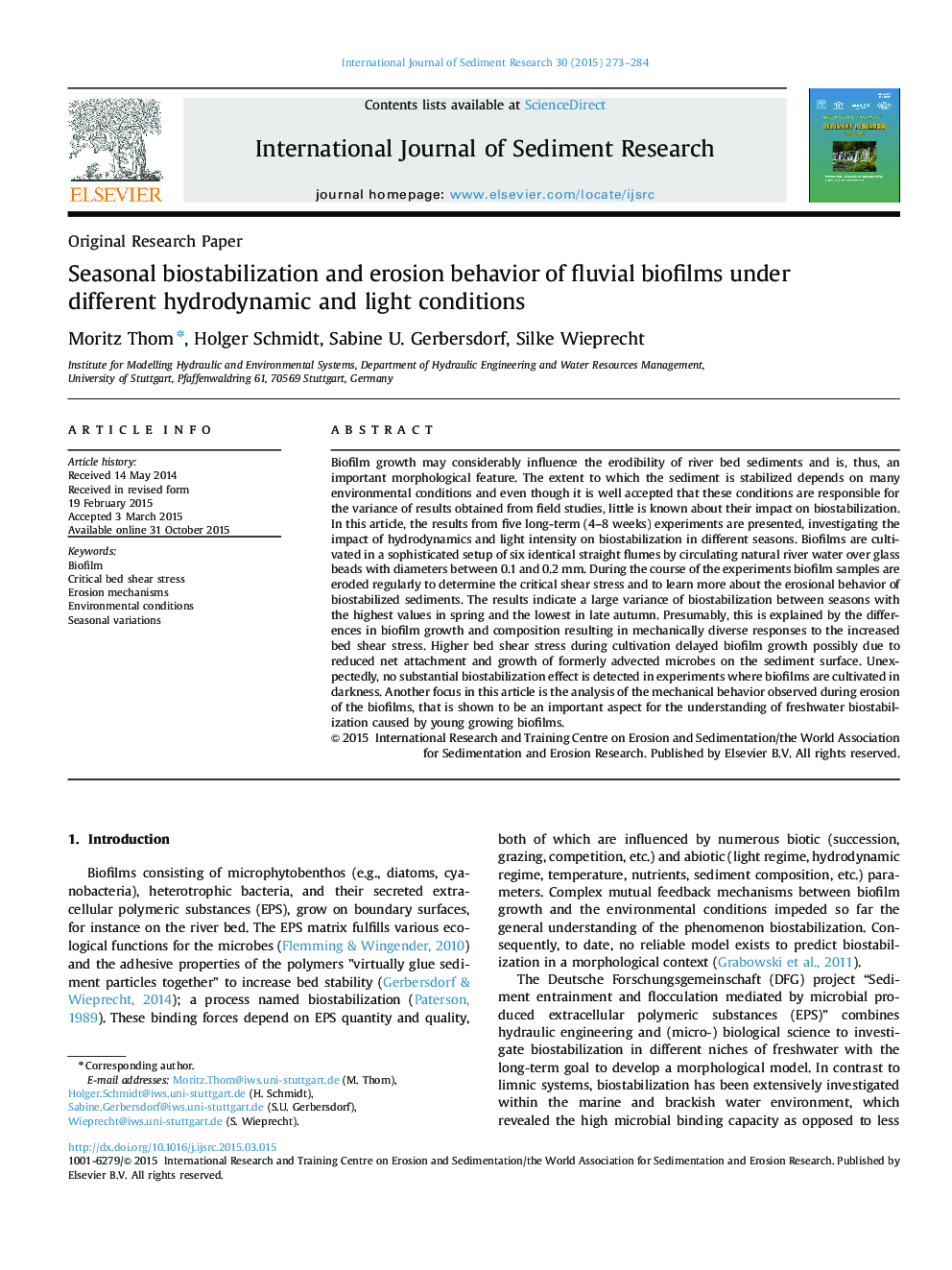| Article ID | Journal | Published Year | Pages | File Type |
|---|---|---|---|---|
| 4713341 | International Journal of Sediment Research | 2015 | 12 Pages |
Biofilm growth may considerably influence the erodibility of river bed sediments and is, thus, an important morphological feature. The extent to which the sediment is stabilized depends on many environmental conditions and even though it is well accepted that these conditions are responsible for the variance of results obtained from field studies, little is known about their impact on biostabilization. In this article, the results from five long-term (4–8 weeks) experiments are presented, investigating the impact of hydrodynamics and light intensity on biostabilization in different seasons. Biofilms are cultivated in a sophisticated setup of six identical straight flumes by circulating natural river water over glass beads with diameters between 0.1 and 0.2 mm. During the course of the experiments biofilm samples are eroded regularly to determine the critical shear stress and to learn more about the erosional behavior of biostabilized sediments. The results indicate a large variance of biostabilization between seasons with the highest values in spring and the lowest in late autumn. Presumably, this is explained by the differences in biofilm growth and composition resulting in mechanically diverse responses to the increased bed shear stress. Higher bed shear stress during cultivation delayed biofilm growth possibly due to reduced net attachment and growth of formerly advected microbes on the sediment surface. Unexpectedly, no substantial biostabilization effect is detected in experiments where biofilms are cultivated in darkness. Another focus in this article is the analysis of the mechanical behavior observed during erosion of the biofilms, that is shown to be an important aspect for the understanding of freshwater biostabilization caused by young growing biofilms.
